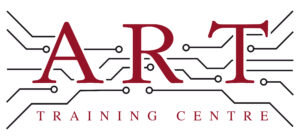Definition
Solder Mask is a protective layer applied to printed circuit boards (PCBs) during the manufacturing process. It serves to insulate and protect the copper traces from oxidation and short circuits, while also preventing solder from bridging between conductive areas during assembly. Solder mask is a crucial component in electronics manufacturing, ensuring the reliability and durability of electronic devices.
How It’s Used in the Industry
Solder mask is applied in several steps during the PCB assembly process. First, the PCB is cleaned to remove any contaminants. Then, a liquid solder mask is applied, either by screen printing, spraying, or using a photoresist process. After application, the board is cured using heat or UV light to harden the mask. This protective layer is essential during soldering, as it prevents solder from adhering to unwanted areas, ensuring proper connections. For technicians, understanding solder mask application is vital for both assembly and rework, as it directly impacts the quality and reliability of electronic products.
History & Origins
Solder mask became common in electronics manufacturing in the late 20th century, particularly with the rise of printed circuit boards in the 1970s. Early adoption was driven by the need for improved reliability in electronic devices as their complexity increased. The development of industry standards, such as IPC-610, further emphasised the importance of solder mask in ensuring quality and performance. Advancements in materials and application techniques have made solder mask an essential aspect of modern electronics production.
Variations
There are several types of solder mask, including epoxy, liquid photoimageable (LPI), and dry film solder masks. Each type has its own application method and properties, such as thickness and thermal resistance. For instance, LPI is often preferred for its precision and ability to cover fine features on PCBs, while epoxy offers strong adhesion and durability. Understanding these variations helps technicians choose the right solder mask for specific applications and ensures optimal performance in electronic assemblies.
Modern Applications
Today, solder mask is widely used in various electronics production methods, including surface mount and through-hole assembly. It plays a critical role in ensuring the quality and reliability of electronic devices by preventing solder bridging and protecting copper traces. Compliance with IPC standards is essential for manufacturers, as it guarantees that the solder mask used meets industry requirements for performance and durability. This relevance extends to professional training, where understanding solder mask application is crucial for quality assurance in electronics.
Practical Tips & Training
When working with solder mask, it’s important to ensure a clean PCB surface before application to avoid adhesion issues. Technicians should use appropriate inspection techniques, such as visual checks and solderability tests, to ensure the mask’s effectiveness. Safety measures, including proper ventilation and protective gear, are essential during the curing process. Structured training and certification in solder mask application not only enhance skills but also ensure adherence to industry standards, contributing to overall product quality.


